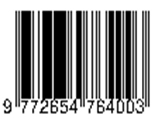HIDROKSIAPATIT SEBAGAI SALAH SATU BAHAN YANG PALING UMUM DIGUNAKAN PADA CANGKOK TULANG: TINJAUAN PUSTAKA
Abstract
Introduction: A bone graft is a bone substitute material that has been widely used in bone grafting. In general, a bone graft can be resorbable and replace normal bone in the healing process within a few months, because in principle the bone graft has the nature of osteoconduction, osteoinduction, and osteogenic. One of the synthetic materials commonly used in the bone graft is hydroxyapatite (HA), which is identical to the crystal structure of hydroxyapatite from the bone. Review: Hydroxyapatite is a synthetic bone graft, which is the most used now due to its osteoconduction, hardness, and acceptability by bone. Hydroxyapatite with a general formula of Ca10(PO4)6OH2 is much similar to an inorganic component of bone matrix. HA is one of the most stable and less-soluble calcium phosphate bioceramics with a Ca/P ratio of 1.67. Synthetic versions of bone apatite have been developed to address the demand for autologous bone graft substitutes. Synthetic HA is stiff and strong, but brittle. Some solutions to this problem are to combine HA with collagen, β-tricalcium phosphate (β- TCP), Calcium phosphate (CaP) Conclusion: Hydroxyapatite is well known for bone regeneration through conduction or by acting as a scaffold for filling of defects from ancient times, but emerging trends of osteoinductive property of HA are much promising for new bone regeneration.
Keywords
Full Text:
PDF (Bahasa Indonesia)References
Kumar J, Jain V, Kishore S, Pal H. Journey of Bone Graft Materials in Periodontal Therapy: A Chronological Review. J Dent and Allied Sci 2016; 5:30-4
Kattimani VS, Kondaka S, Lingamaneni KP. Hydroxiapatite-Past, Present, and Future in Bone Regeneration. Bone and Tissue Regeneration Insight 2016; 7:9-19
Bayani M, Torabi S, Shahnaz A, Pourali M. Main properties of nanocrystalline hydroxyapatite as a bone graft material in treatment of periodontal defects. A reviewof literature. Biotechnology & Biotechnological Equipment 2017.
Ku JK, Hong I, Lee BK, Yun PY, Lee JK. Dental alloplastic bone substitutes currently available in Korea. J Korean Assoc Oral Maxillofac Surg 2019; 45:51-67.
Rusin Z, Ruijia Y, Paul RC, Zohaib K, Amin S, Jithendra R. Bone Grafts and Substitutes in Dentistry: A Review of Current Trends and Developments. Molecules. 2021:6.
Kumar P, Vinitha B, Fathima G. Bone graft in dentistry. J Pharm Bioall Sci 2013;5:125-7
Laurencin C, Khan Y, El-Amin SF. Bone substitutes. Expert Rev Med Devices 2006;3:49-57.
Morris JP, Backeljau T, Chapelle G. Shells from Aquaculture: A Valuable Biomaterial, Not a Nuisance Waste Product. Reviews in
Aquaculture. 2019; 11:42-57.
Dutta SR, PAssi D, Singh P, Bhuibhar A. Ceramic and non-ceramic hydroxyapatite as a bone graft material: a brief review. J Med
Sci 2014
Owen GR, Dard M, Larjava H. Hydroxiapatite/beta-tricalcium phosphate biphasic ceramics as regenerative material
for the repair of complex bone defects. J Biomed Mater Res Part B 2017:00B;000-000
Gibson IR. Synthetic hydroxyapatite for bone-healing applications. Hydroxiapatite (HAp) for Biomedical Applications2015:269-287.
Park JW, Bae SR, Suh JY, Lee DH, Kim SH, Kim H, Lee CS. Evaluation of bone healing with eggshell-derived bone graft substitutes in rat calvaria: A pilot study. Journal of Biomedical Materials Research 2017:203-214.
Ivankovic H, Orlic S, Kranzelic D, Tkalcec E, Highly Porous Hydroxyapatite Ceramics for Engineering Applications, Advances in
Science and Technology. 2010; 63:408-413.
Aziz Y, Adrian M, Alfarisi CD, Khairat, Sri RM. Synthesis of hydroxyapatite nanoparticles from egg shells by sol-gel method. IOP Conf Materials Science and Engineering. 2018; 345: 1-6. 11.
Agrawal K, Singh G, Puri D, Prakash S. Synthesis and characterization of hydroxyapatite powder by sol-gel method
for biomedical application. Journal of Minerals & Materials Characterization & Engineering. 2011; 10 (8): 727-3
DOI: https://doi.org/10.33854/jbd.v8i2.894
DOI (PDF (Bahasa Indonesia)): https://doi.org/10.33854/jbd.v8i2.894.g348
Refbacks
- There are currently no refbacks.
Copyright (c) 2021 B-Dent: Jurnal Kedokteran Gigi Universitas Baiturrahmah

This work is licensed under a Creative Commons Attribution-NonCommercial-ShareAlike 4.0 International License.




